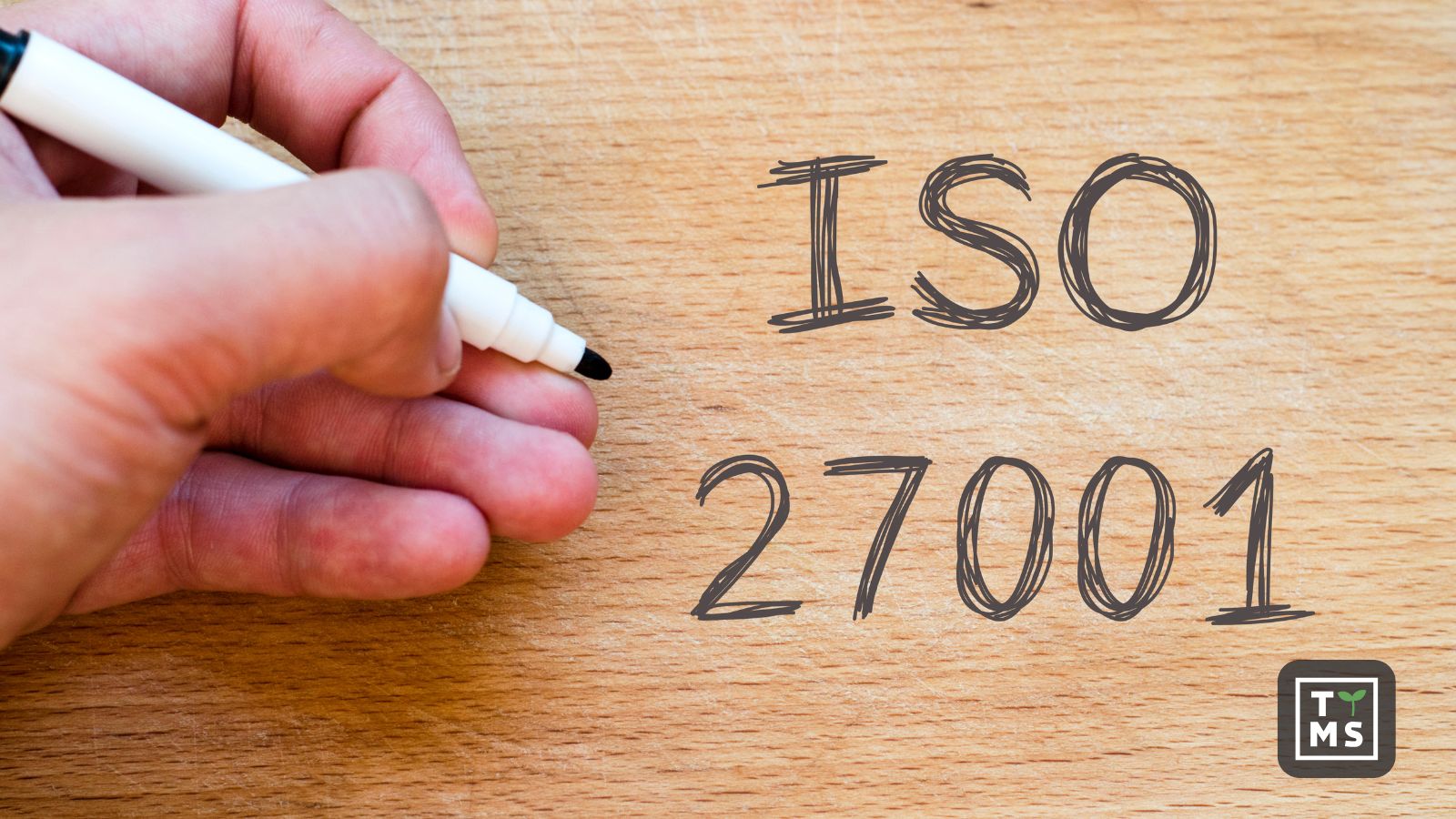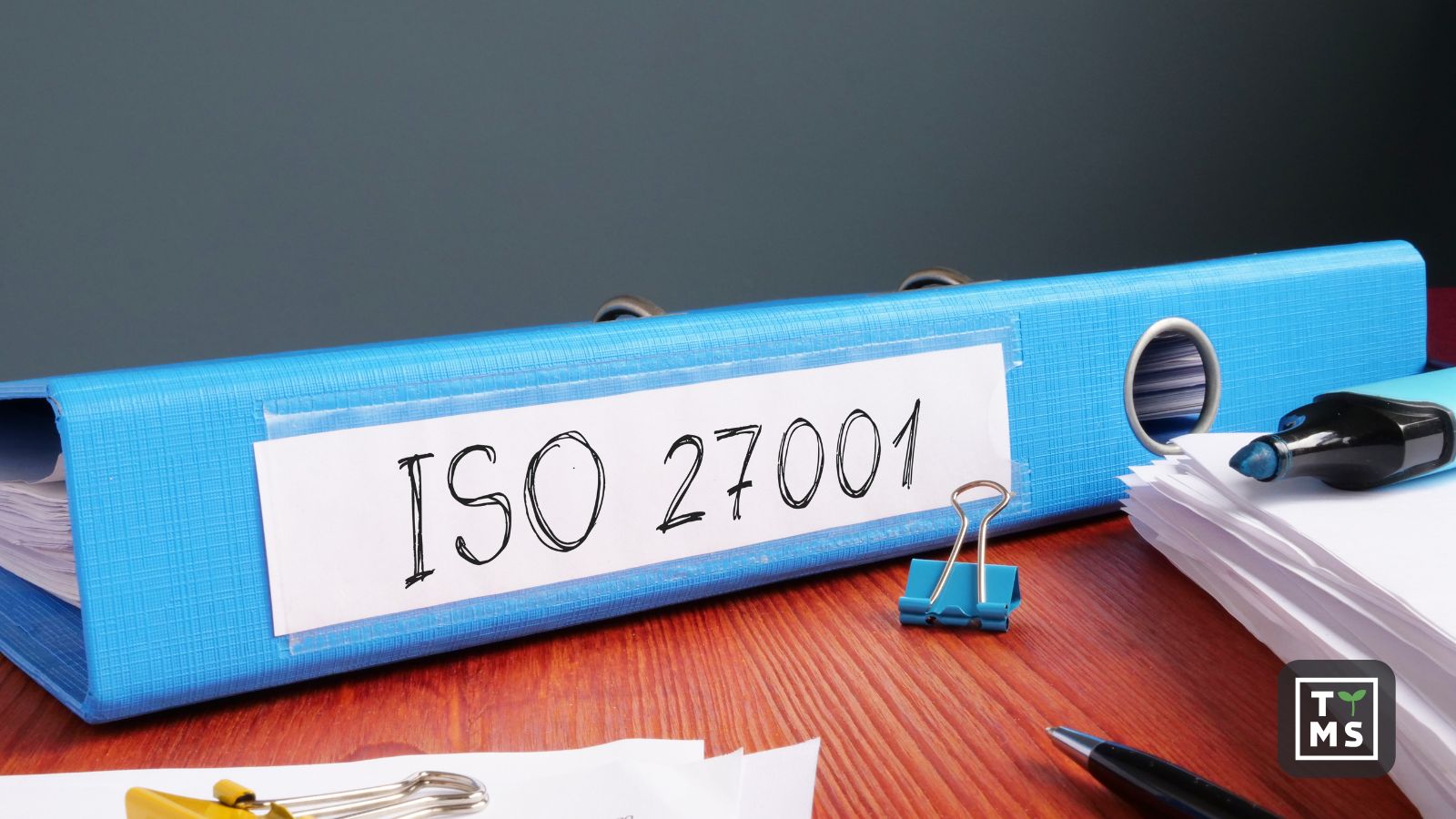
In an increasingly digital world, information security has become the cornerstone of every company’s existence. Almost daily, we hear about data breaches and cyberattacks that can cost businesses millions and damage their reputation—or even lead to their closure. This is why ISO 27001 is no longer just another standard; it is a fundamental tool for protecting a company’s most valuable asset—its data.
1. Introduction to ISO 27001: Definition, Key Objectives, and Principles
ISO/IEC 27001 is an international standard that defines the framework for establishing, implementing, and maintaining an Information Security Management System (ISMS). Developed by the International Organization for Standardization (ISO), this standard provides organizations with structured guidelines to protect their sensitive data efficiently and systematically.
The primary goal of ISO 27001 is to ensure comprehensive information security across three fundamental areas: confidentiality (ensuring access is restricted to authorized individuals), integrity (guaranteeing that data remains accurate and unaltered), and availability (ensuring that information is accessible when needed). The foundation of the standard lies in a process-oriented approach and risk management.
ISO/IEC 27001 offers great flexibility, making it suitable for implementation in various types of organizations, including governmental institutions, small businesses, and large corporations, regardless of the industry. The core principles of the standard involve systematic risk identification, implementation of appropriate security measures, and continuous improvement of security mechanisms.
Implementing ISO 27001 in practice requires the development of a comprehensive system encompassing technical, organizational, and legal aspects. This holistic approach ensures effective information security management, addressing not only cybersecurity threats but also physical data protection.
2. Benefits of Implementing ISO 27001
2.1 Enhanced Information Security and Data Protection
ISO 27001 is a fundamental step toward effective data protection in any organization. The standard helps systematically identify potential threats and implement robust security measures. Companies that have adopted ISO 27001 experience significantly fewer security breaches and data leaks compared to those that do not follow this standard.
The implementation of ISO 27001 is widely recognized as an effective tool for minimizing security risks and preventing data breaches. Additionally, it facilitates the development of an efficient incident response system, which is essential in today’s rapidly evolving cybersecurity landscape. This enables organizations to detect and mitigate threats swiftly, reducing financial losses and reputational damage.
2.2 Building Trust Among Clients and Business Partners
With over 70,000 organizations worldwide certified to ISO 27001, the standard has become a critical element in establishing trust in business relationships. Certification is particularly valued in industries dealing with sensitive information, such as finance and healthcare, where data security is paramount.
Holding an ISO 27001 certificate sends a clear signal that a company adheres to the highest security standards, thereby increasing confidence among clients and business partners. This is especially beneficial when securing new contracts and participating in tenders.
2.3 Compliance with Legal and Regulatory Requirements
With over 70% of companies anticipating stricter regulatory requirements in the coming year, implementing ISO 27001 has become a strategic choice. The standard helps organizations comply with various legal requirements, including GDPR and other data protection laws.
An ISO 27001-compliant system ensures legal adherence and minimizes the risk of financial penalties. This is particularly crucial given the increasing stringency of global data protection regulations.
2.4 Gaining a Competitive Advantage in the Market
Implementing ISO 27001 provides a tangible competitive edge. With over 20,000 companies already certified under ISO/IEC 27001:2022, the importance of information security in business strategy is undeniable.
An ISO 27001 certificate serves as a powerful marketing tool, distinguishing a company from its competitors. Organizations with this certification are perceived as more reliable and professional, which often translates into better performance in tenders and business negotiations.

3. ISO 27001 Implementation Process
3.1 Planning and Risk Analysis in the Early Stages
The implementation of ISO 27001 begins with thorough planning and a comprehensive risk analysis, which are key components of effective information security management. The first step involves conducting an initial audit to assess the current state of security measures and compliance with the standard’s requirements. This audit helps identify both existing security controls and potential gaps that require immediate attention.
A threat map is then developed, outlining potential risks in detail. This includes internal factors such as procedural errors or improper system configurations, as well as external threats like cyberattacks, natural disasters, or unauthorized access attempts. Each risk is analyzed in terms of its likelihood and potential impact on the organization.
Through these assessments, organizations can establish security priorities, focusing on areas that require immediate intervention. The results of the risk analysis serve as the foundation for a risk management strategy that integrates ISO 27001 requirements with business objectives.
3.2 Development of Information Security Policies and Procedures
Based on the risk analysis, organizations develop a comprehensive set of documentation for their Information Security Management System (ISMS). A key part of this phase is the creation of security policies tailored to the company’s structure, industry, and specific needs.
Key Information Security Policies:
- Information Security Policy – The most crucial document defining security objectives, commitments, and the overall approach to information security.
- Access Management Policy – Guidelines for granting, modifying, and revoking system and data access rights.
- Information Classification Policy – Rules for labeling, storing, and protecting data based on its confidentiality level.
- Physical Security Policy – Procedures for securing office spaces, server rooms, and hardware.
- IT Systems Security Policy – Standards for configuring, updating, and protecting IT infrastructure.
- Risk Management Policy – A framework for identifying, assessing, and mitigating information security risks.
- Incident Response Policy – A protocol for reporting, investigating, and resolving security incidents.
- Personal Data Protection Policy – Essential for GDPR compliance, outlining measures for securing personal data.
- Business Continuity Management Policy – Guidelines for ensuring operational resilience during system failures, cyberattacks, or disasters.
- Supplier Security Management Policy – Standards for evaluating and controlling security practices among vendors, cloud providers, and subcontractors.
It is crucial for these documents to be clear, practical, and accessible to all employees, regardless of their role within the company. To ensure effective implementation, policies and procedures must align with business operations, legal regulations, and industry best practices.
This phase requires collaboration across multiple departments, including IT, legal, and risk management teams. Well-defined security policies not only facilitate compliance with ISO 27001 but also create a strong foundation for a sustainable information security framework.
3.3 Implementation of the Information Security Management System (ISMS)
At this stage, theoretical plans are transformed into practical security measures. The organization implements all technical and organizational safeguards designed in the previous phases. Special emphasis is placed on employee training to ensure that every team member understands their role in maintaining information security. Training sessions should cover both general security principles and role-specific procedures.
The system is implemented gradually to allow seamless integration with existing business processes. Each phase requires testing and evaluation to assess effectiveness in real-world scenarios. It is crucial to avoid disruptions to daily operations, ensuring that new security procedures complement existing workflows.
During implementation, continuous compliance monitoring is essential to verify that security measures align with ISO 27001 requirements and business goals. Adjustments are made as necessary to ensure full compliance and optimal security performance. Additionally, the organization must remain adaptable to evolving technological and regulatory changes, ensuring that security strategies remain effective over time.
3.4 Monitoring, Auditing, and Continuous Improvement
Once the ISMS is fully implemented, ongoing monitoring and continuous improvement become essential to maintaining its effectiveness. The monitoring process involves regular assessment of security controls, identification of vulnerabilities, and proactive responses to emerging security challenges.
Periodic internal audits help evaluate compliance with ISO 27001 and identify areas for enhancement. The ISMS should be dynamic and adaptable, allowing the organization to quickly adjust to new threats and changes in the business environment.
Continuous improvement mechanisms include:
- Incident analysis – Learning from past security breaches to enhance defenses.
- User feedback – Incorporating insights from employees to optimize security measures.
- Regular policy updates – Adapting procedures to align with evolving threats and industry standards.
This phase requires commitment from all levels of the organization, from executive leadership supporting security initiatives to employees executing security protocols. A strong culture of security awareness ensures that the ISMS remains effective in the long run. By continuously refining security practices, organizations can not only protect their data assets but also gain a competitive advantage in an increasingly security-conscious market.
4. Common Challenges in Implementing ISO 27001
The process of implementing ISO 27001 comes with numerous challenges that can impact its effectiveness. One of the key aspects is the time investment— a full implementation can take anywhere from several months to a year, depending on the size of the organization and its level of preparedness.
Another critical issue is resource allocation, both in terms of human and financial resources. Implementation requires investments in infrastructure, security tools, and employee training. Data from February 2024 indicates that 47% of security incidents in Europe were due to vulnerabilities in supply chains, emphasizing the need for comprehensive training for all system users.
A significant challenge is securing organization-wide engagement. The introduction of new procedures often meets resistance, making it essential for all employees to understand that information security is not solely the responsibility of IT or security departments but a shared responsibility across the company.
Striking a balance between security and operational efficiency is another challenge. Overly stringent security policies may hinder workflow efficiency, while a lax approach increases vulnerability to threats. Finding optimal security procedures requires in-depth analysis and flexibility.
Finally, documentation and ongoing updates are critical. Implementation demands detailed descriptions of all processes, and keeping them up to date with emerging threats and technological advancements can be time-consuming. Continuous system monitoring and maintaining engagement in security initiatives are essential for long-term success.
5. ISO 27001 Certification – What’s Next?
5.1 Certification Process and Requirements
The ISO 27001 certification process begins with a preliminary audit, during which the certification body conducts a detailed review of the implemented Information Security Management System (ISMS) documentation to verify compliance with the standard.
The next step is the certification audit, where auditors assess the documentation, interview key employees, and observe the system’s practical operation.
Organizations must demonstrate that they have not only developed and implemented the required policies and procedures but are also effectively applying them. Providing evidence of control mechanisms and active management involvement in information security is crucial.
5.2 Maintaining Compliance After Certification
Obtaining certification is just the beginning— maintaining it requires continuous monitoring and internal audits. Certification bodies also conduct annual surveillance audits to confirm that the organization continues to meet the standard’s requirements and maintains an effective ISMS.
A crucial element of compliance maintenance is systematic documentation of changes, security incidents, and corrective actions. Organizations must demonstrate continuous improvement, adapting their ISMS to evolving threats and operational needs.
5.3 Long-Term ISMS Strategy and Development
Long-term ISMS management requires a strategic approach, including regular reviews and updates of security policies to align with evolving market demands and security threats. Implementing a continuous improvement plan enables organizations to respond flexibly to new challenges.
Developing employee competencies through training programs and security awareness initiatives is essential for the system’s success. Organizations should also stay up to date with technological innovations and cybersecurity trends, adjusting security mechanisms accordingly.
Fostering an information security culture, where every employee understands their role and actively contributes to data protection, is vital. Regular security drills and incident simulations help maintain high readiness levels for potential threats.

6. How TTMS Can Help Your Organization Enhance Data Security and Implement ISO 27001
At TTMS, we offer comprehensive support for ISO 27001 implementation, leveraging years of experience across various industries. We start with a detailed assessment of your company’s current information security state, allowing us to identify key areas for improvement.
As part of our implementation services, our team of experts provides:
- A detailed preliminary audit
- Preparation of ISMS documentation tailored to your company’s needs
- Assistance in implementing technical and organizational security measures
- Comprehensive employee training
We understand that every business is unique, which is why our ISO 27001 implementation services are always customized to fit the specific industry and individual needs of each client. At TTMS, we provide not only implementation support but also long-term advisory services to help maintain and improve your information security system.
With our extensive experience in various projects, we can anticipate and effectively address potential implementation challenges. Our team of experts supports you at every stage of the process, ensuring a smooth certification journey and long-term ISMS efficiency.
Partnering with us guarantees a professional approach to information security, ensuring that your implemented system is not only ISO-compliant but also practical and effective in everyday business operations.
At TTMS, we operate an integrated management system , including certifications and licenses such as:
- Information Security Management System (ISO 27001)
- Environmental Management System (ISO 14001)
- MSWiA License – Standards for software development projects for law enforcement and the military
- Quality Management System (ISO 9001)
- IT Service Management System (ISO 20000)
- Occupational Health and Safety Management System (ISO 45000)
What is ISO 27001?
ISO 27001 is an international standard that defines the requirements for an information security management system. This standard:
- Provides a structured approach to managing sensitive company information
- Establishes a framework for protecting data from internal and external threats
- Defines requirements for information confidentiality, integrity, and availability
- Helps organizations meet legal and regulatory requirements
The standard can be implemented in companies of any size and industry, ensuring effective information protection and building trust with business partners
How to implement ISO 27001?
Implementing ISO 27001 is a multi-stage process that requires a systematic approach. The main steps include:
- Conducting a detailed preliminary audit
- Performing a comprehensive risk analysis
- Developing and implementing security policies
- Conducting training for all employees
- Establishing a monitoring and control system
The success of the implementation largely depends on management’s commitment and the active participation of all employees. It is also crucial to allocate adequate resources and time for the project.
How much does ISO 27001 implementation cost?
The cost of implementing ISO 27001 varies for each company and depends on several factors:
- Company size and number of employees
- Current level of security processes
- Complexity of IT infrastructure
- Scope of required changes and improvements
- Training needs
The exact cost can only be determined after an initial analysis and company assessment. Keep in mind that investing in information security is not an expense but a strategic investment in the company’s future.
How to implement an ISMS?
Implementing an Information Security Management System (ISMS) requires:
- Defining the system’s scope and boundaries
- Identifying key information assets
- Developing security policies and procedures
- Implementing control and monitoring mechanisms
- Conducting training and building employee awareness
The ISMS implementation should be tailored to the company’s specifics and business objectives. The most important aspect is ensuring that the system is practical and effective in daily operations.